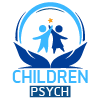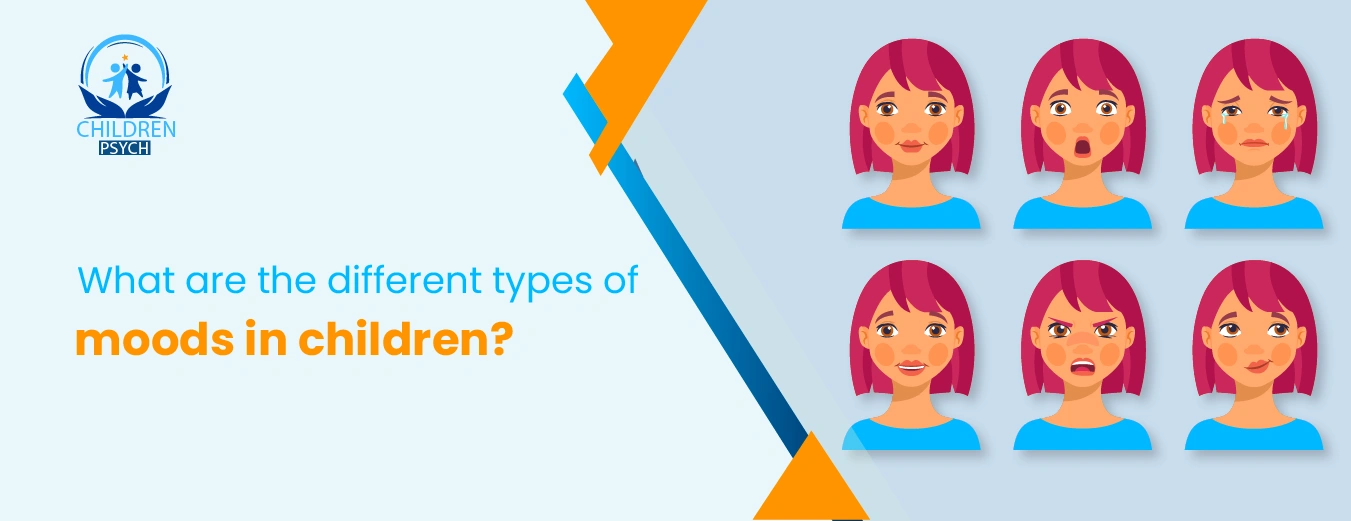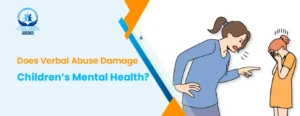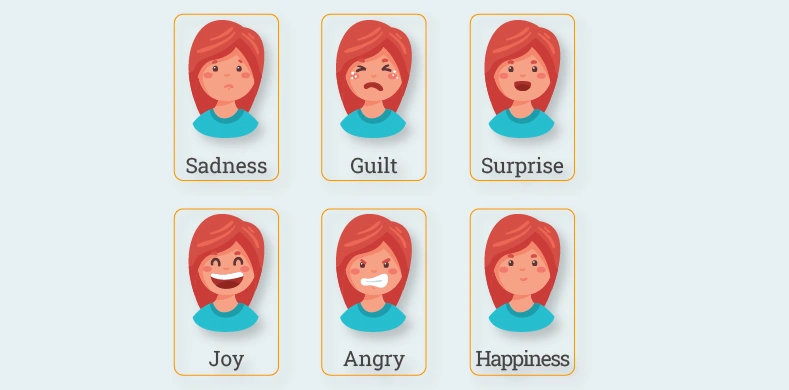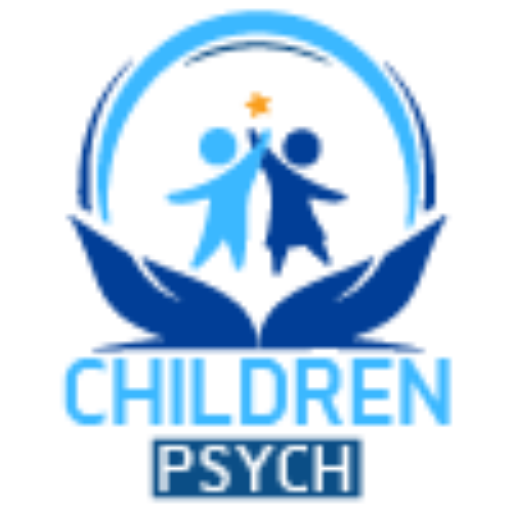The life of each child is a rollercoaster of moods or emotions that have a strong influence on each aspect of their life. Every child experiences a variety of moods that range from simpler (happiness, sadness) to more complex ones (anger, anxiety, and irritable behavior). However, the difference lies in their manifestation, which is quite different from adults. If the intensity of mood or emotions increases, then it can also result in mood disorders. However, early intervention and diagnosis work effectively in managing the mood disorder or mood-related issues of children.
If you want to get detailed knowledge of what mood is and what the different types of moods then read this article. This will also help you to understand how mood influences the children’s lives and what the best ways to manage the moods are. So let’s take a look at it.
What is the Mood in Children?
A mood is a general state of feeling or an emotional state that lasts longer than emotions. Moods can be of multiple types, such as positive and negative. Positive moods include happiness and pleasure, while negative moods include anger, sadness, frustration, etc. Whatever the child’s mood, both cognitive and behavioral aspects are strongly affected.
What are the Types of Moods in Children?
In general, there are two main types of mood in children, which are as follows:
| Positive mood | Negative mood |
| In a positive mood, a child feels happiness, pleasure, excitement, motivation, and high energy levels.
Most common examples of positive mood include:
|
Negative moods in children include sadness, anger, tantrums, reduced or loss of motivation, and lower energy levels. A child in a negative mood does not feel good and mostly avoids others.
Other major examples of negative mood in children include:
|
Do Children Experience all Types of Emotions?
Yes, children can experience each type of emotion, which includes:
- Primary
- Secondary
However, children in the early stages can not easily explain their emotions in front of others. But as their age progresses, they not only get familiar with their emotions but also start making their emotions apparent in front of themselves and others. Moreover, they also get an insight regarding their emotions and their types, and also learn the ways to cope with their changing emotions and thoughts.
Primary Emotions
As the name indicates, primary emotions are those that a child possesses by birth. Moreover, they are also known as the fundamental emotions. Although their onset occurs early in life, they remain universal.
Types of Primary Emotions in Children
Sadness: A child does not feel happy and does not find pleasure in anything.
Fear: Children get easily scared of anything and mostly feel threatened.
Surprise: Children have strong feelings of wonder
Disgust: The child does not show a sense of liking and mostly shows a disliked behavior.
Joy: Children have strong feelings of excitement and happiness, or have delightful experiences with other things.
Secondary Emotions
Secondary emotions come after the primary ones. In children, these emotions are also named as self-conscious emotions as they usually develop later, or at that stage where they become completely aware of their own emotions and also of others. In addition, they also have social expectations due to the occurrence of secondary emotions.
Main types of Secondary emotions in children
Pride: Children have a strong sense of satisfaction with themselves. They feel pleasure in having their qualities, capabilities.
Shame: A strong feeling of humiliation and embarrassment
Emberassement: Children feel awkward or uncomfortable in social gatherings.
Guilt: A strong inner feeling that they have done something unfair or wrong.
What are Mood Swings in Children?
Mood swings are the sudden alteration in the emotional state of individuals, including children. Mood swings are a normal part of childhood, as every child experiences them. But if they become severe and occur in a more frequent manner, they can directly affect the functioning of daily life activities.
Always remember that if your child is showing tantrums then it does not mean that your child is dealing with any mood disorder. As a parent or caregiver, your first main responsibility is to identify whether your child is showing normal mood swings or if there is any underlying mental illness.
Read More: How to help child with mood disorder?
What are Common Mood disorders in Children?
Mood disorders are common mental health issues that affect a child’s mental or emotional state. The symptoms of mood disorders directly interfere with the daily life functioning of children. The most common mood disorders in children are as follows:
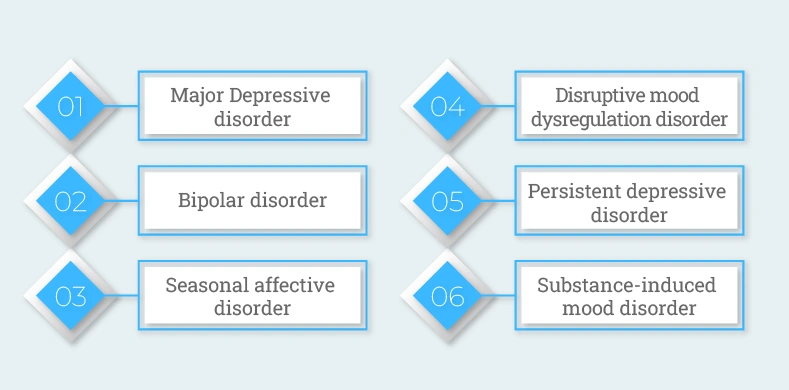
Major Depressive disorder
Major depressive disorder is the most common type of mood disorder, in which symptoms of depression usually last for two weeks, depending on the mental state of the child. In addition, children with major depression do not find happiness or pleasure in those activities that were once enjoyable. Moreover, they consider themselves worthless and less capable of participating in any useful or productive activity.
Bipolar Disorder
Bipolar disorder involves the sudden mood swings or alterations that occur cyclically. This mental illness involves two major episodes, which include major depression and mania. At one time, children feel happiness, while at other times they get tense or depressed, and also feel low energy.
Seasonal Affective Disorder
As the name indicates, seasonal affective disorder occurs in a specific season or period. For example, most people feel sad or low during winter. This is due to seasonal affective disorder. As soon as winter ends, they start feeling happiness and higher energy levels.
Disruptive Mood Dysregulation Disorder
Disruptive mood dysregulation disorder is also a form of mood disorder in which children exhibit the most often mood swings, anger outbursts, as well as irritable behavior.
Persistent Depressive Disorder
As the name indicates, this mood disorder usually persists for a longer period, about one year if not treated on time.
Substance-Induced Mood Disorder
This form of mood disorder can be induced by substance abuse, such as alcohol or toxins.
What are the Major Factors that Trigger the Moods in Children?
Several factors can influence the moods of children, such as:
| Internal factors | External factors |
| Physical needs such as hunger, discomfort, and fatigue, etc. | Family pressure |
| Neurodevelopmental changes | Academic pressure |
| Hormonal changes | Traumatic life experiences |
| Lack of sufficient diet | |
| Lack of sleep | |
| Any physical illness |
Why Do Kids Need To Manage Their Moods?
Every child deserves the mood or emotional stability to thrive in each phase of life. If they have an unstable or bad mood, then there are higher chances that they will have to face multiple issues in each field of their life. However, if they efficiently manage their mood, then they can easily overcome all their life challenges with ease and confidence.
The following are the main points that indicate why managing moods is essential in children:
Development of Social Skills
Those children who not only understand their own emotions but also others feel ease and comfort in their social interactions. They do not feel shy or embarrassed while communicating with others. In that, they not only learn but also improve their social skills.
Improved Academic Performance
Children with a managed mood or emotions pay more focus or attention in class and also learn more efficiently. Ultimately, their academic performance increased.
Decision-Making Skills
Children with a managed mood can not think smartly about what’s good or bad for them. They have difficulty making the most important life decisions. However, if they have stable moods, then they get and utilize their decision-making skills.
Increased Confidence & Self-Esteem
Mood stability in children is also linked with increased confidence and self-esteem, which in turn help them to step towards success in life.
Improved Mental Resilience
Managed moods also help the children to acquire mental resilience, the ability to cope with or withstand any stressful life event or scenario.
Reduced Involvement in Risky Behaviors
Children with mood or emotional instability are more likely to get involved in or participate in risky or harmful activities. In addition, they can start alcohol or substance abuse. However, with a managed mood, they always remain careful while doing or starting any new task or activity.
Strengthened Relationships
Children with a stable mood communicate with their parents and scenarios and share their feelings and thoughts without any fear of criticism or judgment. This helps them in making and maintaining stronger bonds with them.
Mental Stability
Balanced mood and emotions also help in getting rid of common mental health issues such as anxiety, depression, and acquiring mental stability.
How to Help a Child Manage Moods?
Each parent or caregiver has the responsibility to help the child manage their moods so they excel in each life phase. The following are the most common and useful ways that can efficiently work in managing the moods of children:
1. Acknowledge their Mood or Emotions.
It’s not necessary that you always like your child’s thoughts, specific mood, or emotions. Instead of criticizing them, validate and acknowledge them. Moreover, teach them how they can identify their specific thoughts or emotions and their triggers. In this way, they will automatically learn to manage or control the intensity of their specific emotion.
2. Open Communication
Try to develop a friendly and non-judgmental environment where your child feels secure and shares everything that they feel. They do not feel any hesitation and become an open book in front of you.
Be an active listener. Make your child feel that you are patiently listening to them. Avoid each kind of distraction during the discussion and make them feel listened to or heard.
3. Teach Coping Skills
Guide your child that emotional instability is not good for them if they want to succeed in life. Teach them the following main coping skills that they can use to manage their emotional intensity:
Creative skills: This involves drawing, sketching, or painting as it helps them to manage as well as vent out their emotions.
Mindfulness and relaxation techniques: This helps the children to overcome their intense emotions while staying in the present moment. Most common mindfulness and stress management techniques include:
- Deep breathing
- Yoga
- Meditation
- Physical activity
Other relaxation and stress management techniques include:
- Sensory activities
- Having a longer and deeper conversation
Moreover, learning some problem-solving and social skills can also help in this regard.
4. Be a Role Model for Your Child
Always remember that whatever you do, your child will always mimic you. So, try to model healthy emotional expressions. For this, you can participate in those activities that aid in managing mood or emotional health way.
Moreover, you can also be open with them and share your previous life experiences for managing emotions, so they also learn how you get rid of your negative emotions or manage your emotions.
5. Show Support and Encouragement
Do not say anything negative to your child regarding their mood or emotions. Always support them and guide them in the best possible ways to learn to manage their mood or emotional intensity.
6. Have Some Patience
Always remember that good things take time. So have patience and wait for that time when your child completely learns to better manage their emotions or mood. Do not force your child to rush into learning. Give them their own useful space for learning. In addition, also teach them that consistency and staying on the grind are the cornerstone to success.
7. Address Underlying Issues
If you find that your child is dealing with any underlying mood disorder, then first identify the triggers and then employ the best treatment options. With time, you will see the difference in your child;s mood.
8.Seek Professional Help
If you think that you are unable to help your child and your child’s negative mood or emotions are interfering with life, then you can also seek professional help from experts.
Concluding Thoughts
Moods are the emotional state that lasts longer than emotions. Moreover, they have a lower intensity. There are two major types of mood, which include positive and negative moods. Positive moods include feelings of pleasure, happiness, excitement, and high energy levels. Negative emotions comprise anger, sadness, frustration, and low energy levels. Moreover, there are several internal as well as external stress factors that affect the moods or emotions of children. If the mood is not managed, then it can lead to difficulties that children face in their lives. However, parents, caregivers, or seniors can take the right actions on time and help the children manage their mood and overcome mood-related issues.
Children’s Psych: A Safe Place for Your Child’s Mental Well-Being
If you are concerned about your child’s mental health and are looking for the best psychiatric solutions, then you are in an ideal place. Children Psych is a leading platform that offers the finest and comprehensive range of psychiatric solutions for children and adolescents. Our expert child psychiatric nurse practitioners have extensive experience and expertise in developing the most effective therapeutic strategies to regain the mental wellness of their young minds.
If your child or adolescent is battling with any mood disorder, then Children Psych is here to help you. Our experts will provide tailored solutions so your young one enjoys life with mental serenity. Book a consultation with our experts and help your child get rid of the mental illness.
Frequently Asked Questions
Does a child having special needs experience both positive and negative emotions?
Yes, any child with special needs experiences each type of emotion. But the main fact is that they face difficulty in managing them.
What are the 7 most common moods in children?
Happiness
Sadness
Surprise
Anger
Fear
Disgust
Pleasure
What are the three most common types of mood disorders?
Major depression
Seasonal affective disorder
Persistent depressive disorder
Which medications are used for the treatment of mood disorders?
Experts prescribe the following medications to treat the mood disorders:
Mood stabilizers
Antidepressants
Antianxiety medications
Antipsychotics
Anticonvulsants
What are 5-year-old mood swings?
A child whose age is 5 experiences mood swings as a normal part of their development. However, if it gets intense, then it needs to be considered immediately.
